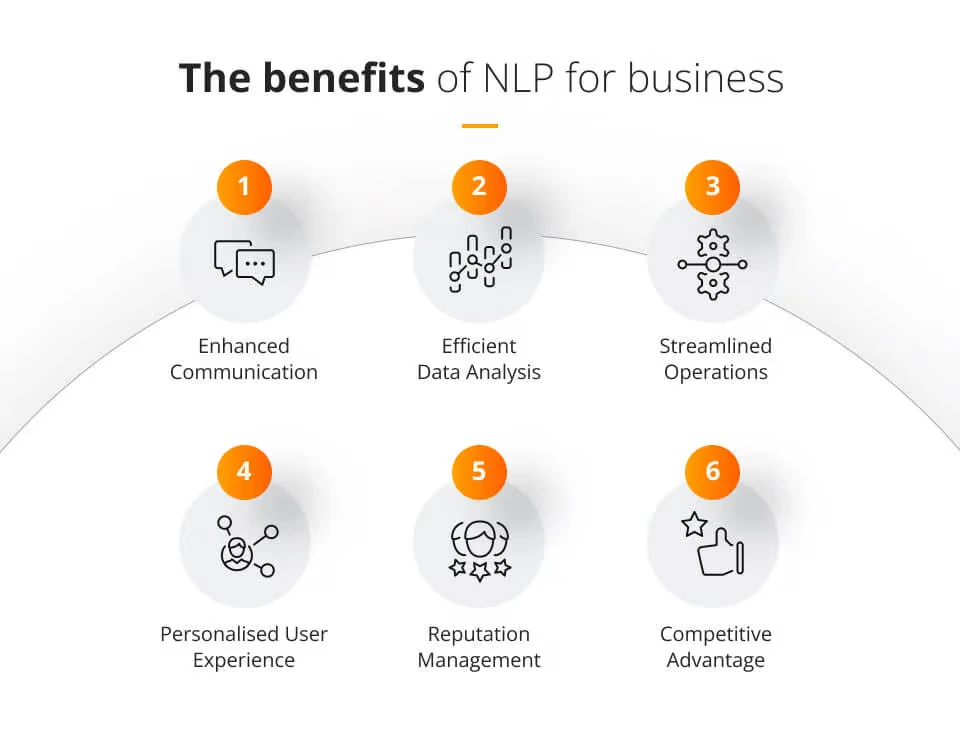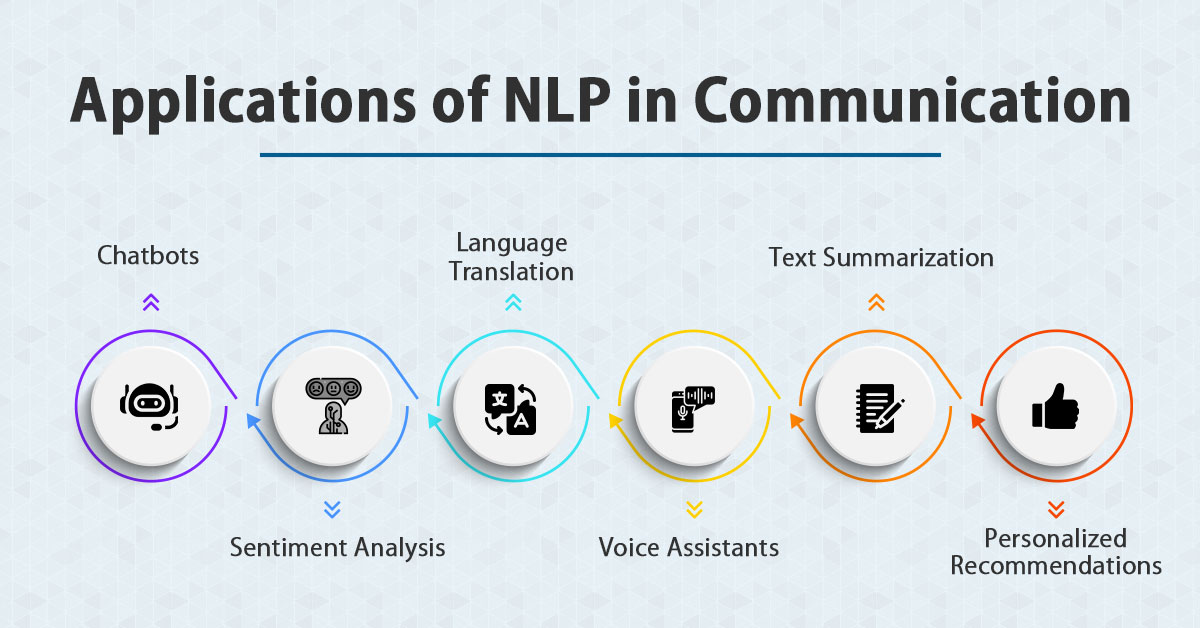NLP in Business: Techniques and Applications You Need to Know
Table of Contents

- jaro education
- 21, November 2024
- 6:00 pm
Picture this: you’re crafting an email to a global client, translating complex technical jargon into plain language that resonates with them. While it sounds like a task for a seasoned communicator, advancements in technology now allow machines to do much of this seamlessly. Enter NLP—Natural Language Processing. Before we dive into how Natural Language Processing is revolutionizing business communications, let’s address the basics: What is NLP?
What Is NLP?
The NLP full form is Natural Language Processing, a subfield of artificial intelligence that bridges the gap between human language and machine understanding. Essentially, Natural Language Processing enables computers to interpret, analyze, and generate human language in meaningful ways. Whether it’s understanding a tweet, translating a document, or responding to customer queries, NLP in artificial intelligence has become indispensable.
In the realm of business communications, Natural Language Processing applications streamline processes, enhance customer experiences, and optimize internal workflows.
Why NLP Is the Game Changer Businesses Need
The fast-paced corporate world thrives on efficient communication. Businesses deal with unstructured data daily—emails, chat transcripts, social media comments, and reports. Natural Language Processing techniques turn this unstructured data into actionable insights, helping organizations save time and money.
Take this example: A multinational company receives thousands of customer service emails daily. Instead of assigning a team to manually categorize these, they use NLP applications like sentiment analysis to prioritize responses to dissatisfied customers.

*FutureProcessing
NLP Techniques Transforming Business Communications
-
- Sentiment Analysis: Helps businesses gauge customer emotions—positive, neutral, or negative—based on feedback or online reviews.
- Text Summarization: Condenses lengthy documents into concise summaries without losing key information, aiding quick decision-making.
- Named Entity Recognition (NER): Extracts specific data, like names, dates, and locations, from vast datasets.
- Machine Translation: Facilitates real-time language translations, breaking down communication barriers in international collaborations.
Key NLP Applications in Business
NLP applications in business are vast, with new possibilities emerging daily. Let’s explore some popular use cases:
1. Customer Support Automation
- Chatbots powered by Natural Language Processing answer routine customer queries, reducing the need for human intervention.
- Tools like Zendesk and Intercom utilize Natural Language Processing to provide 24/7 support, ensuring customer satisfaction.
2. Sentiment Analysis for Brand Monitoring
- Social media has become a goldmine of customer feedback. Natural Language Processing applications allow businesses to monitor brand sentiment and react swiftly to potential crises.
- Companies like Coca-Cola analyze tweets, comments, and reviews to identify trends and consumer sentiment.
3. HR and Recruitment
- Natural Language Processing simplifies resume screening by identifying keywords and aligning them with job descriptions.
- Tools like Textio improve job postings by analyzing tone and readability to attract diverse talent pools.
4. Content Creation and Personalization
- AI writing assistants like Grammarly and Jasper use Natural Language Processing to enhance writing and tailor messages for specific audiences.
- Marketers use Natural Language Processing-driven tools to create personalized campaigns that resonate with their target audiences.
5. Real-Time Translation
- Platforms like Google Translate and Microsoft Translator enable businesses to communicate across language barriers.
- This is particularly useful for global firms engaging with clients and partners worldwide.

*PranathiSoftwareServices
Real-World Examples of NLP Applications
- Amazon Alexa and Customer Engagement
-
- Amazon’s Alexa relies on Natural Language Processing to understand voice commands, providing users with information, recommendations, and even jokes. For businesses, voice-enabled devices enhance customer interaction and loyalty.
- LinkedIn and Recruitment Analytics
-
- LinkedIn uses Natural Language Processing techniques to match candidates with suitable job openings, ensuring better recruitment outcomes for businesses.
- Slack and Internal Collaboration
-
- Natural Language Processing in artificial intelligence powers Slack bots to provide task reminders, meeting updates, and quick information retrieval, fostering team productivity.
Challenges in Implementing NLP
-
- Data Privacy Concerns: Handling sensitive data, especially in customer communications, requires robust security measures.
- Language and Dialect Variability: NLP tools often struggle with regional dialects and informal language, making accuracy a challenge.
- High Initial Costs: Developing and integrating NLP applications into existing systems can be expensive.
The Future of NLP in Business Communications
Imagine a world where customer queries are resolved before they’re even asked, or where your emails draft themselves based on your tone preferences. This is not science fiction but the trajectory of Natural Language Processing applications in business.
Key trends to watch:
- Emotion AI: Advanced sentiment analysis tools will soon detect subtle human emotions, enabling hyper-personalized interactions.
- Voice Commerce: With Natural Language Processing, voice assistants will evolve to provide more intuitive shopping experiences.
- Multimodal AI Systems: Future Natural Language Processing systems will integrate text, speech, and visuals for a holistic communication approach.
Final Thoughts
The NLP full form might seem like just another acronym, but its implications are profound. By answering What is NLP?, we uncover a technology that transforms the way businesses interact, grow, and succeed. From automating routine tasks to unlocking powerful insights, Natural Language Processing in artificial intelligence is paving the way for smarter, more connected communication strategies.
Businesses that embrace Natural Language Processing techniques today will not only enhance their operations but also position themselves as leaders in a tech-driven future. As the saying goes, it’s not just about working harder; it’s about working smarter—with a little help from NLP.
What do you think—how will Natural Language Processing revolutionize your business communication strategies?
Frequently Asked Questions
Natural Language Processing (NLP) is used for enabling machines to understand, interpret, and respond to human language effectively. Some common applications include:
-
- Customer Support: Automating responses using chatbots.
- Text Analysis: Extracting insights from reviews, feedback, or unstructured data.
- Translation: Real-time language translation through tools like Google Translate.
- Voice Assistants: Devices like Alexa and Siri use Natural Language Processing to interpret and respond to voice commands.
- Sentiment Analysis: Assessing emotions in text, often used for brand monitoring and feedback.
NLP techniques can be broadly categorized into these four types:
-
- Morphological Processing: Focuses on analyzing the structure of words, including prefixes and suffixes.
- Syntactic Analysis: Examines sentence structure to ensure grammatical correctness.
- Semantic Analysis: Studies meaning in text or speech, including context and word relationships.
- Pragmatic Analysis: Looks at the intended meaning behind words, considering tone, culture, and situational context.
Natural Language Processing uses a combination of programming languages and tools to process and understand human language. Some commonly used programming languages for Natural Language Processing include:
-
- Python: With libraries like NLTK, SpaCy, and Transformers for tasks like text analysis and machine learning.
- Java: Often used in enterprise-level Natural Language Processing solutions for its scalability.
- R: Preferred for statistical analysis and visualization in Natural Language Processing projects.
- C++: For high-performance Natural Language Processing tasks requiring speed and efficiency.
The language processed by Natural Language Processing, however, includes natural languages like English, Spanish, Mandarin, and any other human language.
- Yes, ChatGPT is an Natural Language Processing-based model. It leverages Natural Language Processing in artificial intelligence to understand and generate human-like responses. Specifically, ChatGPT is built on a variant of Transformer architecture, a deep learning model specialized for handling sequential data like text.
- In essence, ChatGPT uses advanced Natural Language Processing techniques like contextual understanding and text generation to assist users in a conversational manner. It’s a prime example of how Natural Language Processing applications in business and personal domains are revolutionizing communication.









